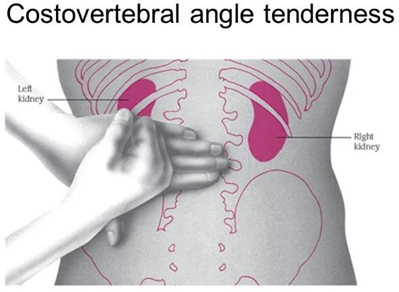The nurse is assessing a client after bariatric surgery. The client complains of chest pain and shortness of breath. What is the priority nursing Intervention at this time?
Sit the client up and provide supplemental oxygen
Contact the physician and obtain an arterial blood gas
Explain that this is an expected finding after surgery
Encourage the use of the incentive spirometer
The Correct Answer is A
A. Sit the client up and provide supplemental oxygen is the correct priority intervention. Chest pain and shortness of breath can be indicative of pulmonary embolism or other respiratory complications, which require immediate attention. Sitting the client up helps improve respiratory mechanics, and providing supplemental oxygen can support oxygenation while further assessments are conducted.
B. While contacting the physician and obtaining an arterial blood gas may be necessary to assess respiratory status and oxygenation, it is not the immediate priority. The client's symptoms require immediate intervention to ensure adequate oxygenation and prevent further deterioration.
C. Chest pain and shortness of breath are not typically expected findings after bariatric surgery and could indicate serious complications. It is essential not to dismiss the client's symptoms but to take them seriously and initiate appropriate interventions.
D. While the use of an incentive spirometer is important for preventing respiratory complications after surgery, it is not the priority intervention in this situation. The client's current symptoms require immediate attention to address potential respiratory distress or other serious complications.
Nursing Test Bank
Naxlex Comprehensive Predictor Exams
Related Questions
Correct Answer is B
Explanation
B. Changing the IV tubing every 24 hours helps prevent the accumulation of bacteria and other contaminants within the tubing, reducing the risk of infection. This practice is particularly important for clients receiving TPN, as they are at higher risk of infection due to the direct infusion of nutrients into the bloodstream.
A. It is essential to maintain the integrity of the IV site to prevent infection and ensure proper TPN delivery. Changing the IV site dressing every 24 hours helps minimize the risk of contamination and infection at the insertion site.
C. Regular monitoring of the client's weight is not necessary.
D. While monitoring blood glucose levels is important for clients at risk of hyperglycemia or hypoglycemia, the frequency of monitoring should be individualized based on the client's clinical condition and risk factors.
Correct Answer is C
Explanation
C. Costovertebral tenderness, which is tenderness over the costovertebral angle (where the ribs meet the vertebral column) on palpation, is more indicative of acute pyelonephritis rather than cystitis. In acute pyelonephritis, inflammation of the kidney parenchyma and surrounding tissues can lead to tenderness in this area.

A. Both acute pyelonephritis and cystitis can present with urinary urgency, as it is a common symptom of urinary tract infections (UTIs) in general.
B. Increased WBCs in urinalysis: While an increased number of white blood cells (WBCs) in the urinalysis can indicate a urinary tract infection, it is not specific to either acute pyelonephritis or cystitis.
D. Hematuria can occur in both acute pyelonephritis and cystitis.
Whether you are a student looking to ace your exams or a practicing nurse seeking to enhance your expertise , our nursing education contents will empower you with the confidence and competence to make a difference in the lives of patients and become a respected leader in the healthcare field.
Visit Naxlex, invest in your future and unlock endless possibilities with our unparalleled nursing education contents today
Report Wrong Answer on the Current Question
Do you disagree with the answer? If yes, what is your expected answer? Explain.
Kindly be descriptive with the issue you are facing.
